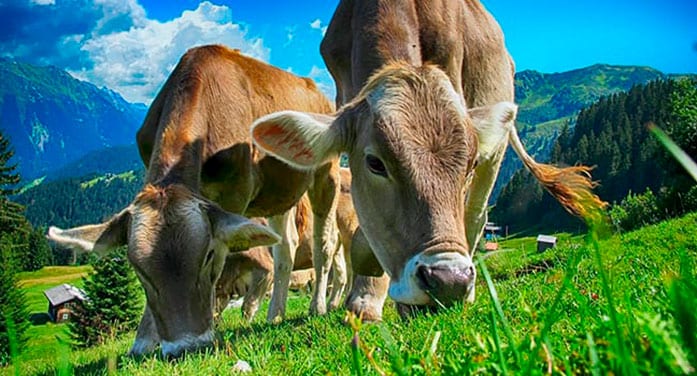A sweeping project co-led by University of Alberta researchers will provide the most comprehensive mapping ever of how much carbon is being stored in perennial grasslands across Saskatchewan.

Cameron Carlyle
The resulting data from the $3.2-million initiative will help cattle farmers there – and eventually all across Canada’s prairies – manage their land to keep as much harmful greenhouse gas in the ground as possible.
“We know that grasslands are holding onto large amounts of carbon, and this project is going to help us quantify some of the contributions from the beef industry in terms of maintaining their land as grazing land, which helps keep carbon in the ground and not in the atmosphere,” says U of A rangeland ecologist Cameron Carlyle, one of the lead researchers on the project.
Soil carbon also helps retain water, which makes the prairie forage more productive and nutritious for cattle and more resistant to drought, he says.
The project results could also help producers benefit from carbon offset protocols, like one being piloted in Canada, if at some point such a program is implemented, notes Carlyle, an assistant professor in the Faculty of Agricultural, Life & Environmental Sciences.
| RELATED CONTENT |
| Plant diversity minimally affected by intensive cattle grazing: study By Adrianna MacPherson |
| Innovative livestock grazing approach could reduce greenhouse gases By Katie Willis |
| The future of farming is smarter By Therese Kehler |
“Our research could help establish baseline values for carbon storage and help identify specific management practices that would allow a producer to put more carbon into the ground.”
The work, conducted with the University of Saskatchewan, encompasses eight million hectares of land across the southern half of the province and takes in several factors that will ultimately help producers with long-term decision-making, Carlyle says.
“We want to be able to identify, for example, whether there’s any risk to overall production through a tradeoff in managing for carbon.”
The researchers will analyze soil samples from various types of perennial native and seeded grass and hay lands, along with the nutritional value of the vegetation. Farmers will also be surveyed on their current land management practices, such as grazing intensity and fertilization.
The results will be used to create accurate “fenceline to fenceline” maps of soil carbon on a producer’s land that will help quantify it across the region, and enable estimates of soil carbon held under different management scenarios.
A database of information on many different soil samples will also be developed to help researchers estimate carbon values at lower cost and with less labour than current practices.
The research will eventually be applicable across the prairies to help producers in Alberta and Manitoba increase carbon soil in their grazing land, Carlyle adds.
“These ecosystem and land management practices don’t have borders.”
The research, which Carlye is co-leading with University of Saskatchewan soil scientist Angela Bedard-Haughn, is supported by the Canadian Agricultural Partnership, the Government of Saskatchewan, Ducks Unlimited Canada and the Saskatchewan Cattlemen’s Association.
| By Bev Betkowski
Bev is a reporter with the University of Alberta’s Folio online magazine. The University of Alberta is a Troy Media Editorial Content Provider Partner.
The opinions expressed by our columnists and contributors are theirs alone and do not inherently or expressly reflect the views of our publication.
© Troy Media
Troy Media is an editorial content provider to media outlets and its own hosted community news outlets across Canada.


